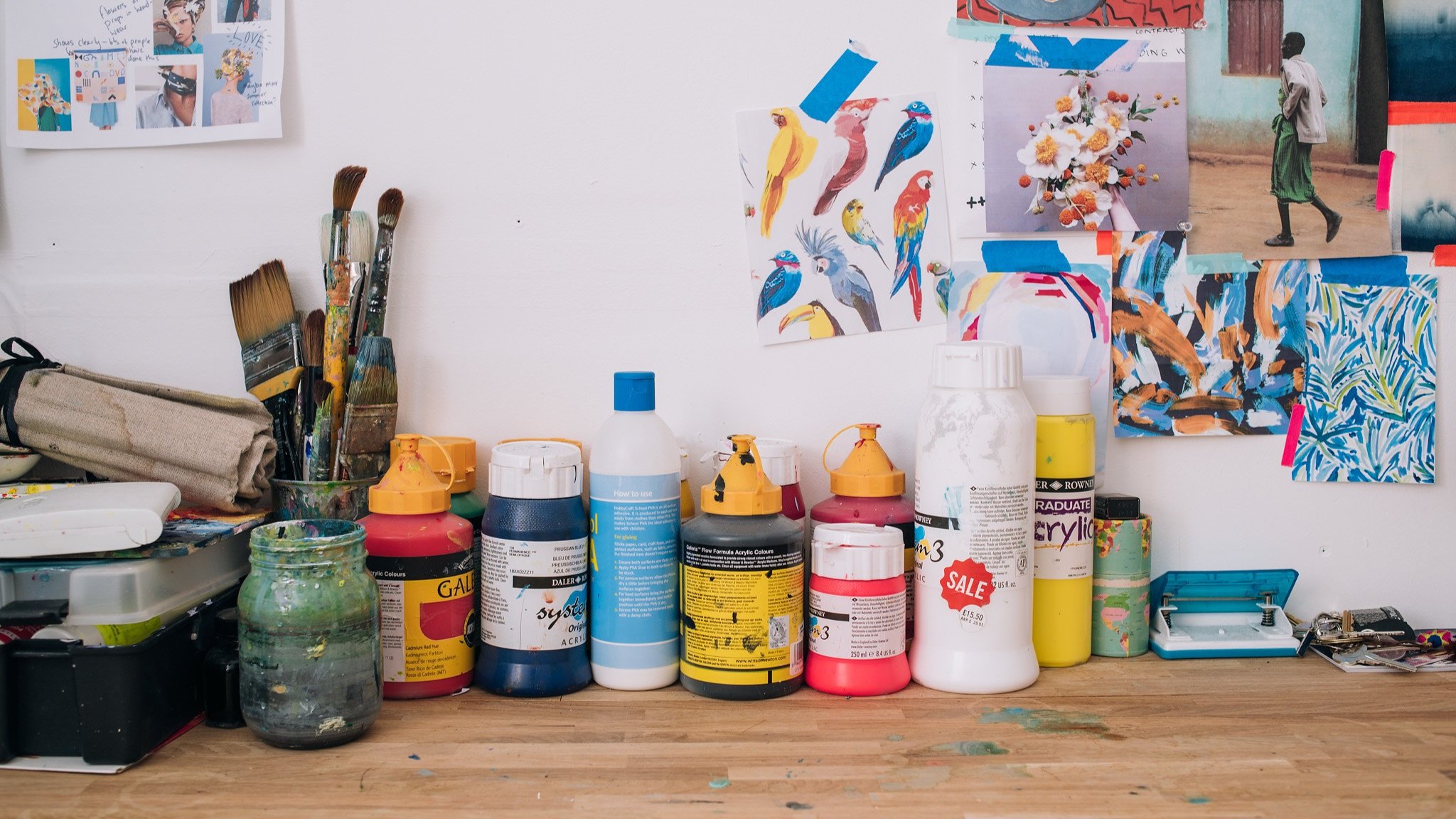Tips from My Studio - Colours
Mastering Colour Mixing With Acrylic Paints
Colour is the most important element when I start a painting. Here are some tips to help you navigate the vibrant world of acrylic painting and create your own beautiful paintings.
1. Understand the Colour Wheel
The colour wheel is a fundamental tool for artists. It helps you understand the relationships between colours, which is crucial for mixing. The primary colours—red, yellow, and blue—can be mixed to create secondary colours like green, orange, and purple. Tertiary colours are made by mixing primary and secondary colours.
Complementary Colours: Colours opposite each other on the wheel (e.g., blue and orange) create contrast and vibrancy.
Analogous Colours: Colours next to each other (e.g., blue, blue-green, and green) blend harmoniously.
2. Start with a Limited Palette
Once you’ve experimented with colour pairings from the colour wheel, you’ll want to pick a colour palette for your painting. If you’re starting, a limited palette can be less overwhelming and help you understand how colours interact. I suggest picking 4 colours plus white. A top tip I picked up at college was to never use straight black paint from the tube. If you need to create a dark colour, use dark blue and purple instead. The result will be a rich dark-toned color with more depth than just using black.
3. Consider Colour Temperature
Colours have temperatures—warm (reds, oranges, yellows) and cool (blues, greens, purples). Warm colours tend to come forward in a composition, while cool colours recede. Understanding this can help you create a sense of depth and balance in your paintings. I tend to gravitate toward cool-tone colours and often start a painting by underpainting the canvas in a blue wash. This helps keep all the colours I paint on top unified and cool-toned.
4. Experiment with Mixing
Practice makes perfect. Here’s a simple exercise:
Mixing Shades and Tints: Add small amounts of dark tones to a colour to create shades (darker versions) and white to create tints (lighter versions).
Creating Neutral Colours: Mix complementary colours to create neutral tones like greys and browns. This is useful for toning down colours and creating more natural-looking shades.
5. Don’t Be Afraid to Break the Rules and Have Fun
While understanding colour theory is important, don’t be afraid to experiment and trust your instincts. Some of the most beautiful and unique artworks come from breaking traditional rules and exploring new combinations.
Happy painting!




